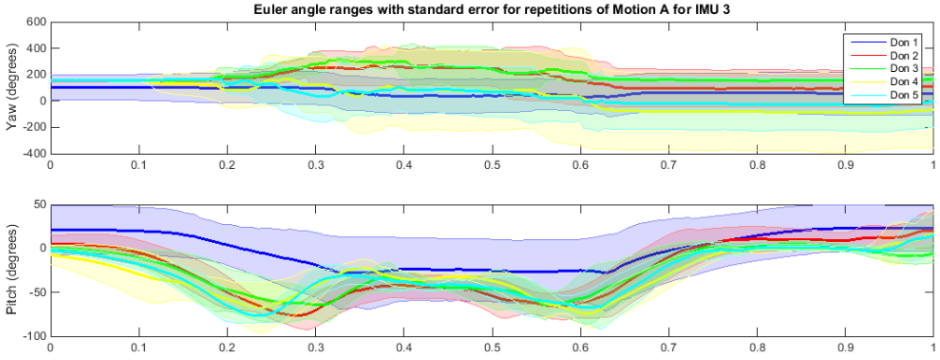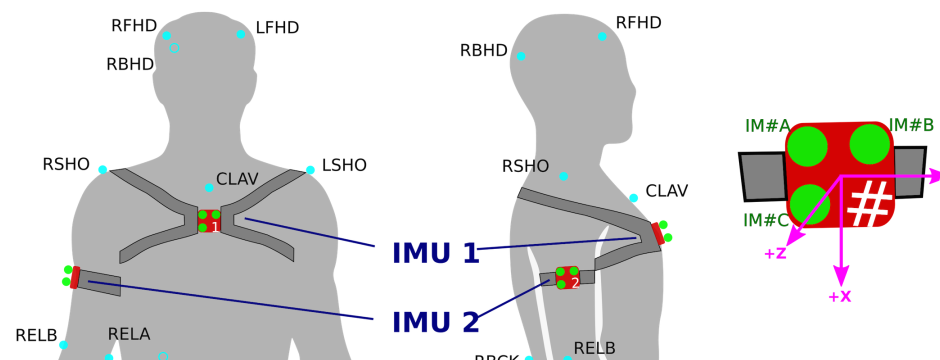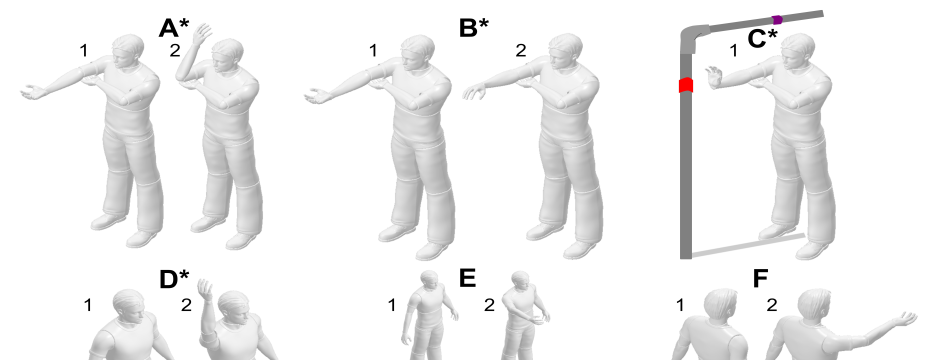Characterization of Variability of On-Body Sensors during Donnings - add pictures of shaded results on matlab
And I've officially gone viral! Check out the articles from my photoshoot with my thesis.
With emphasis on long duration missions to Mars, there is a need for sensor suites that are reliable, self-sufficient, and require minimal logistical needs. And in order to use these systems efficiently, we need to understand how a non-expert varies in the placement of these sensors. In this study, I focused on sensors used for motion capture in particular.
Introduction
The ability to use sensors to extract human activity and diagnostics has both Earth and extra-terrestial applications. According to the 2014 IHS MEMS And Sensors for Wearable Report, consumers will be wearing close to 500 million sensors by 2019. This estimate includes devices for motion measurement, user interfaces, and health industry products, with an emphasis on personal devices that are used daily by non- experts. Additionally, future space exploration will likely include human crews traveling to other celestial bodies for extended periods of time. NASAs Space Technology Roadmap places human health monitoring as a sub-technology area in one of its fourteen technology areas that must be matured before crews venture out beyond low earth orbit. With increased emphasis on long duration travel beyond Earths gravitational influence, there is a growing need for technologies with improved reliability, self-sufficiency, and minimal-logistical needs. With such small crew sizes proposed for these missions, crew members are likely to find themselves experts in only a few fields. Non-experts, both Earth- and space-bound, in the fields of human motion capture introduce variability during repeated use of these unfamiliar systems.
A necessary requirement to enable such portable and continually-used systems that are reliable, self-sufficient, and require minimal-logistical needs is to understand and appropriately incorporate the variability of humans during repeated use in the system architecture. This study specifically considers wearable technology systems for estimating human motion. Inertial Measurement Units (IMUs) are small elec- tronic devices that measure acceleration and angular velocity. By quantifying and characterizing the underlying variability in IMU placement on the human body during multiple donnings, we can further understand the effects of calibration poses and natural human variability on the estimated kinematics and associated parameters. This work also provides a database for future algorithm development.
Experimental Methods
The participants of this study first donned Inertial Measurement Units (IMUs) using straps. Four IMUs were donned in total (chest, bicep, forearm, hand). Each IMU had 3 markers on it in a triad that defined the top plane of the IMU. Markers are passive, reflective spheres that the Vicon Motion Capture system tracks during motions. Twelve markers were also placed directly on the participants' bodies. The straps were sized for each participant.
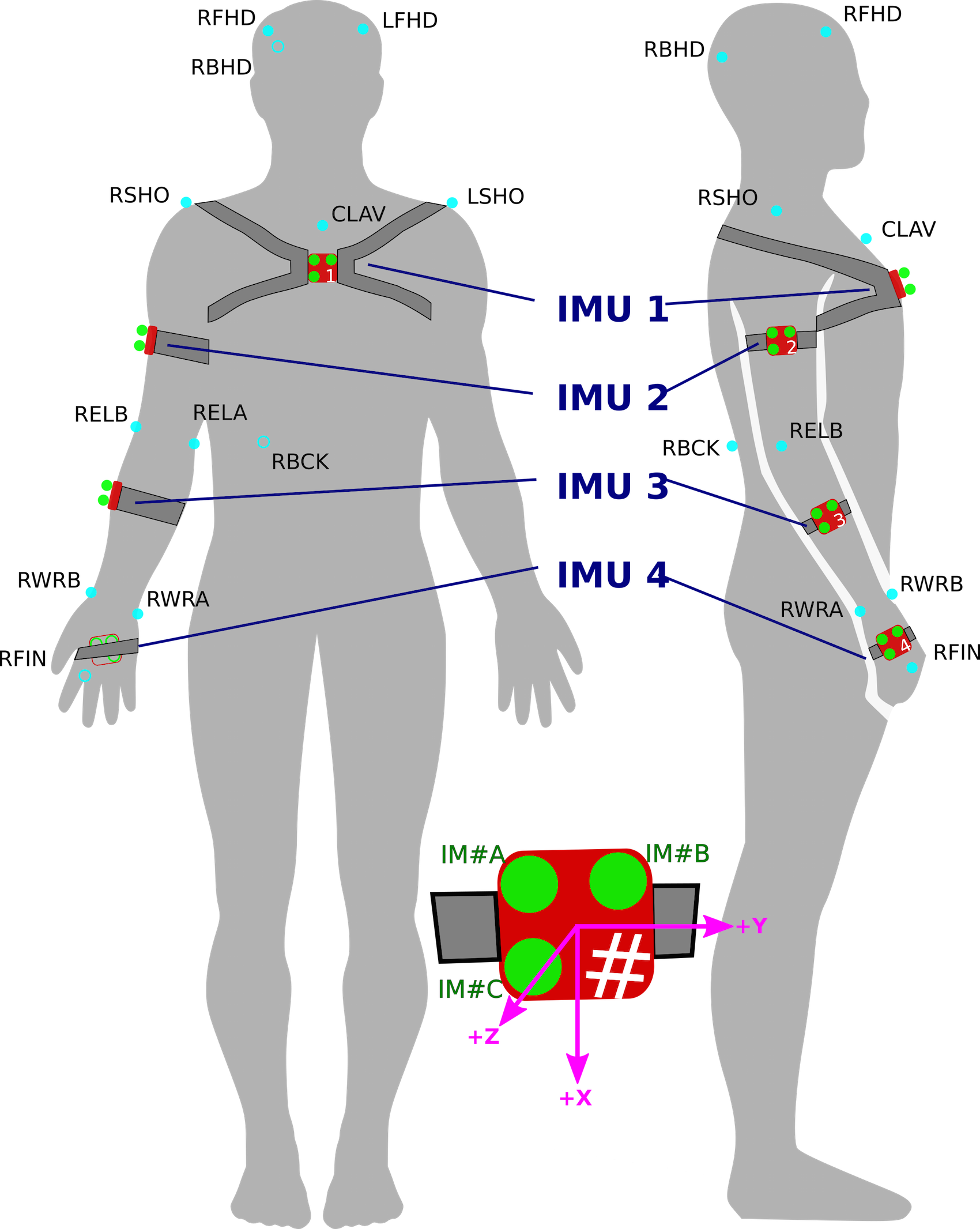
In order to undertand variability in placement of IMUs during repeated use, the participants were asked to donn the straps 5 times. During each donning, six predetermined motions were performed six time each (randomized for learning effects) for a total of 36 motions each donning. The motions were a combinations of relevant degrees of freedom for Activities of Daily Living and typical motions of astronauts on the ISS. Complexity of the motion was defined as the number of degrees of freedom. The participants had a visual description of each motion within eye during the study.
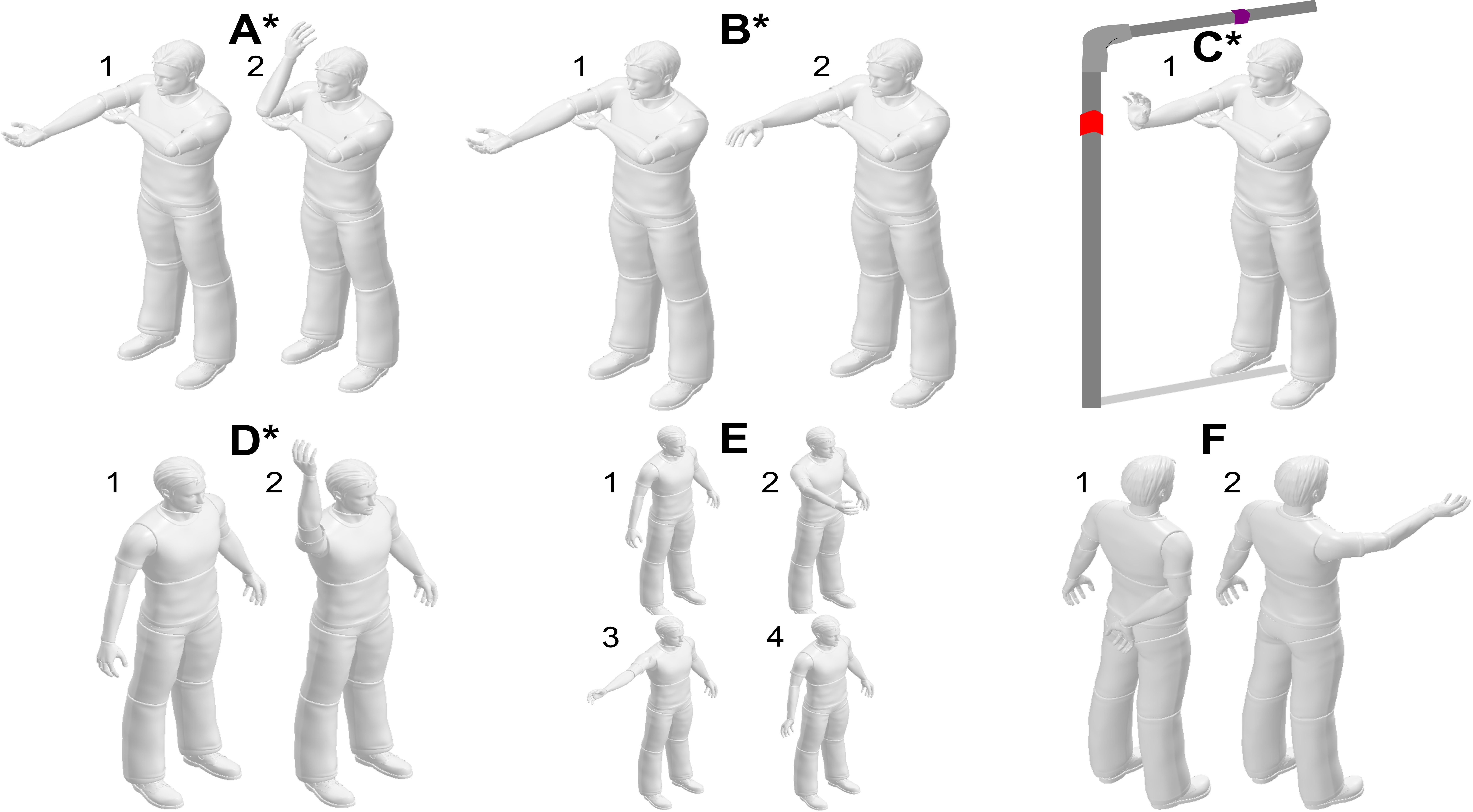
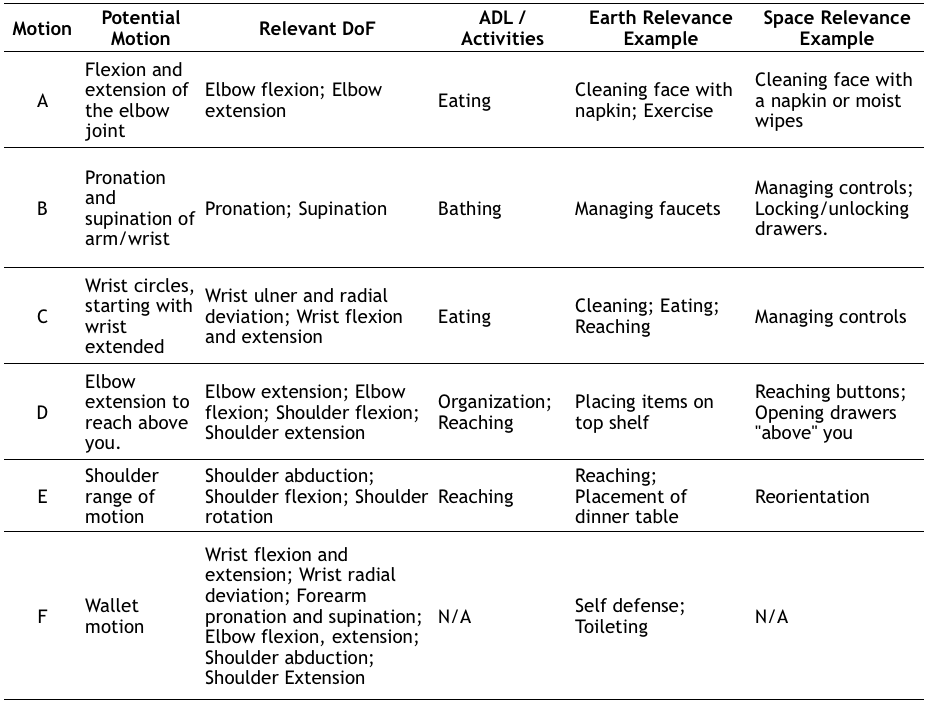
The measurement taken were placement values of the IMU. Placement was defined as IMU distance, orientation, and rotation. The centroid of an IMU was the distance between markers B and C. IMU distance was defined as the distance between the IMU centroid and the corresponding body-fixed markers. IMU orientation was defined as the orientation (in degrees) the IMU had rotated along the plane of initial placement. Finally, IMU rotation was defined as the rotation around the local body curvature. And example of the markers used to determine the angle of rotation for IMU 2 is below.
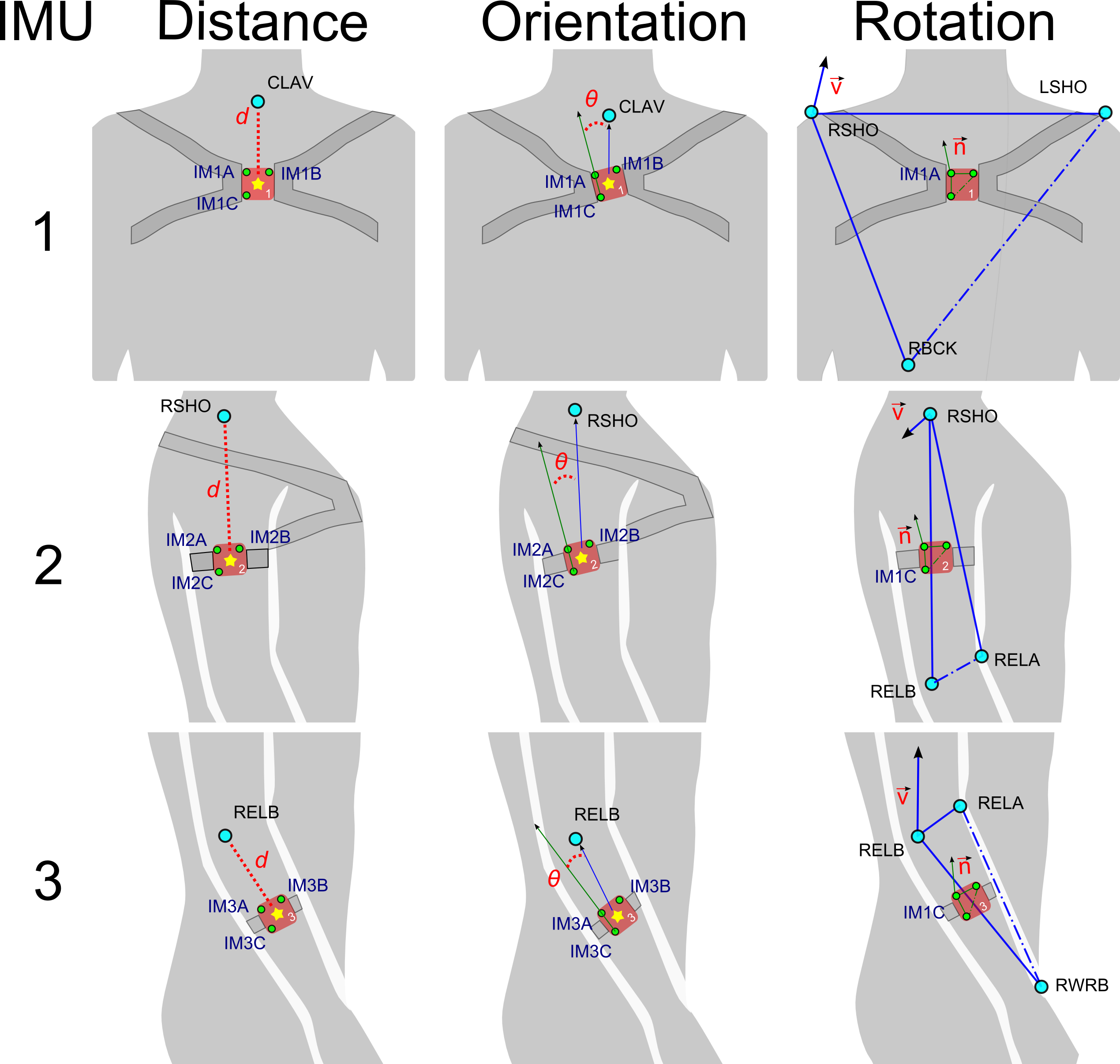

Results
The accuracy of rigid body motion estimation is dependent on sensor placement and calibration. Therefore, characterization of sensor placement is needed to aid in development of algorithms and sensor attachment design for wearable motion capture systems. This thesis first tested the hypotheses that initial placement (defined as distance, orientation, and rotation) of IMUs located at the chest, bicep, and forearm by a non-expert is a↵ected by (1) the number of times the sensors are donned, (2) the type of functional motions performed, and (3) the location of the IMU on the body. Next, it tested the hypothesis that placement of IMUs varied throughout a motion to determine whether a rigid-body assumption is still appropriate during functional motions. Finally, given an understanding of the underlying variability, the effect of this variability was inferred from the calculation of ranges of values commonly used by motion capture algorithms.
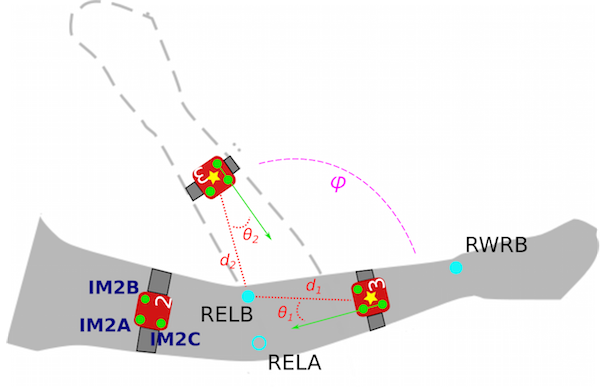
This study made use of off-the-shelf strap mounting configurations for the IMUs and found that the chest mount varied the least in initial placement in terms of distance and rotation, but its orientation varied more than when the IMUs were placed on the bicep and forearm. Although significant differences in IMU placement were found between donnings, no consecutive effects were found, showing that repeated donnings of a sensor suite do not lead to decreased variability in placement. It also found that the lack of a guide to assist with starting and ending positions of a motion results in significant differences in placement at the beginning and end of motions. The placement of the sensor on the human-body varies throughout a motion, and cannot be expected to be the same even within a single donning due to confounding variations in donning position, motor position errors, posture effects, and the complexity of the joints studied, and thus the underlying assumption of a rigid-body model used by motion capture algorithms might not be appropriate. Motion capture algorithms need to account for the changes in position and Euler angles due to natural human variability and calibration during multiple donnings of IMUs by non-experts.
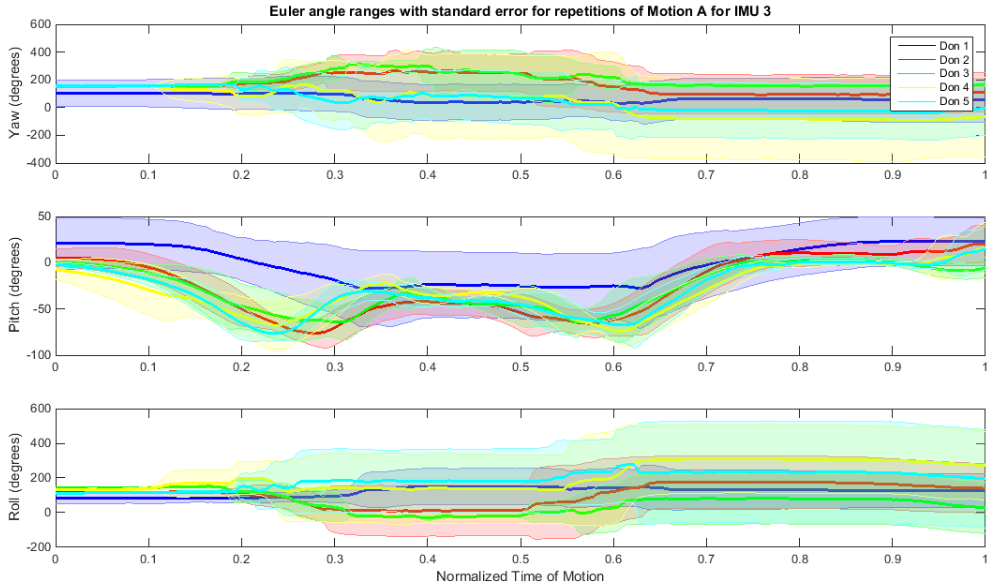
Summary of Contributions
The results presented in this study examined the effects of self-donning on IMU distance, orientation, and rotation at the chest, bicep, and forearm, both on initial placement and during motions. It also studied the potential effects of variable ranges on orientation estimation algorithms. The list of contributions from this study include:
- - Developed a comprehensive database of both IMU data as well as external Vicon motion capture data, that encompasses motions, locations, and donnings, for use in future algorithm development.
- - Determined that, given the variation in the placement measures of IMUs throughout a motion, the rigid-body model used by motion capture algorithms might not be appropriate.
- - Quantified variances of IMU distance, orientation, and rotation at 3 locations on the body to assist with future sensor mount designs.
- - Determined that for strap configurations, orientation of the IMU at the chest varies the most as compared to bicep and forearm IMU orientations. Thus, algorithms that use chest mounts couple rotations in the coronal plane with deviations of the IMU itself.

